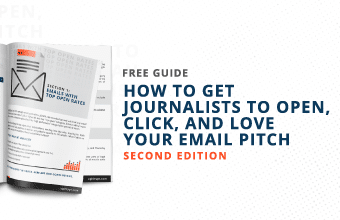Given a choice, most journalists would rather receive a tailored, personalized pitch instead of a press release sent to large distribution list. But when faced with the prospect of reaching hundreds of journalists, many PR agencies resort to “faux personalization”—sending emails that appear to be tailored, but reveal themselves as mass mailings as soon as we get past the salutation. In many cases, this turns out to be the worst approach of all.
Here’s one example culled from the “Bad PR” folder:
Hello Stephen,
Hope all is well. I thought you might be interested in the information below. Please contact me for any additional information and/or to schedule an interview and I will gladly coordinate that for you. Thank you for your time, I look forward to hearing back.
The sender not only refers to me by first name, he also hopes that “all is well” and even knows about my interests! Could this be information about a new fitness magazine or health blog, developments I might actually cover? No, what followed was a press release about a company offering senior care services.
This one is even worse:
Hi Stephen,
I see you cover all sorts of new trends in healthcare, and thought you might be interested in my client [company name withheld], as it is set to officially launch this month …
I do not write about trends in healthcare. I write about health journalism. This person compounded the error two weeks later by sending a follow-up with “Re:” in the subject line, as if replying to me.
Hi Stephen,
I know you must be swamped with emails, so I just wanted to send a quick follow up on my email below. My client, [company name withheld], officially launched yesterday … I’d really love to work with you on some upcoming coverage, and perhaps connect you directly with co-founder of [company name withheld], Dr. [name withheld], for the inside scoop.
But the all-time classic arrived from an agency in L.A. It has earned a permanent spot in my PR Hall of Shame:
Hi Stephen,
Below are some of our celebrity EXPERTS that I think would be of interest to your readers … Dr. [name withheld] is THE leading cosmetic dentist … Dr. [second name withheld] is THE leading plastic surgeon and genital reconstruction EXPERT … one of the first in the U.S. to be Board Certified in both Urology and Plastic Surgery with NO outstanding malpractice lawsuits.
This was too good an opportunity to pass up, so I replied as follows:
I would be happy to do interviews with your experts—if you can explain to me why my readers would be interested in reading about them.
Best regards,
Steve Beale
A quick Google search would have revealed that I write for an audience of PR professionals. But here’s the reply I received:
Hi Steve,
Thanks for your reply … I would be happy to! Our experts are literally EXPERTS in their respective fields. Your readers would be interested to read about Dr. [name withheld] because he has nearly single-handedly changed America’s perception of the dentist chair … Additionally, your readers would also be interested in Dr. [second name withheld] because of his very unique specialty in plastic surgery …
And so on. She essentially regurgitated the points in the original message.
Now, the senders of these emails could have been lucky and reached a few writers or editors for whom the info was more or less on target. But most journalists can tell the difference between a pitch that’s truly personalized and one that merely fakes it. If you fake it, you have a credibility problem from the start—not a good way to build trusting relationships with the media.
On the other hand, a simple press release does not pretend to be anything else. If it’s on-target, it may have useful information. Even if it’s not, I don’t feel that the sender is trying to fool me. They just need to do a better job filtering their lists.
One approach that many editors like is getting a press release with a short note on top indicating why the publicist thinks it’s a good match. As long as it’s truly personalized, it tells the journalist that you’ve made some attempt to understand the publication’s coverage area and audience. The key is that you have to treat the recipient as an individual, not as a name on a list. That requires more work, but it’s better than making yourself—and your clients—look so foolish.









